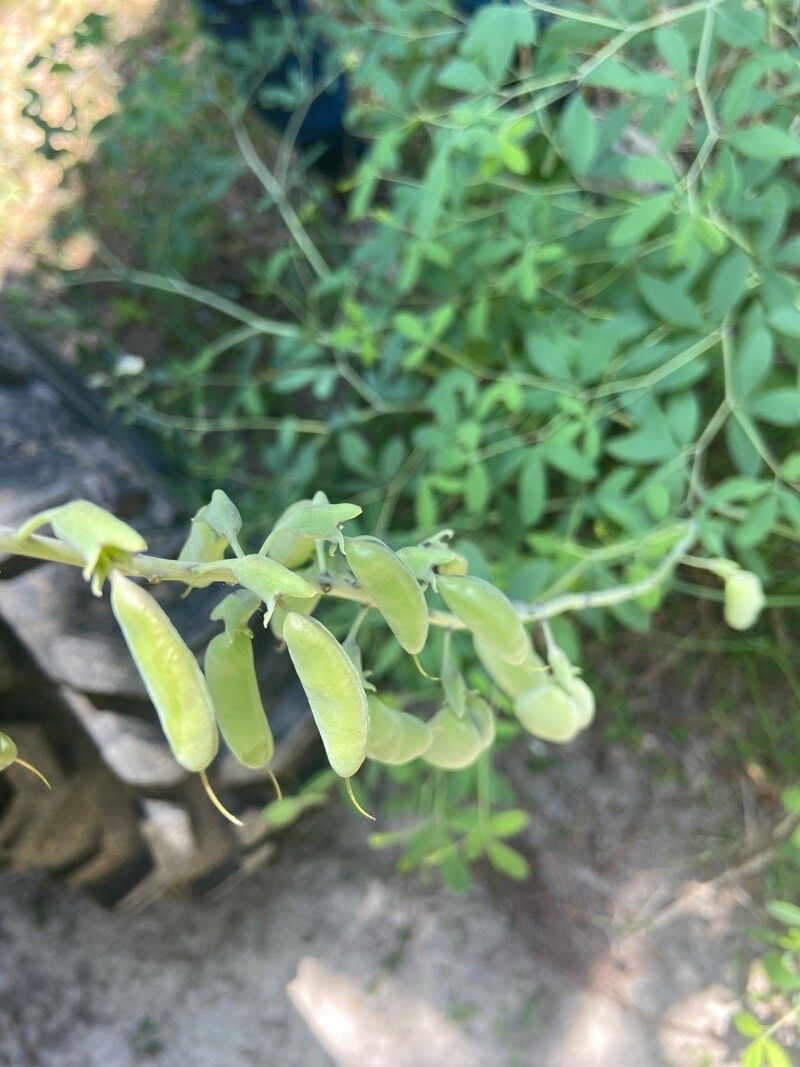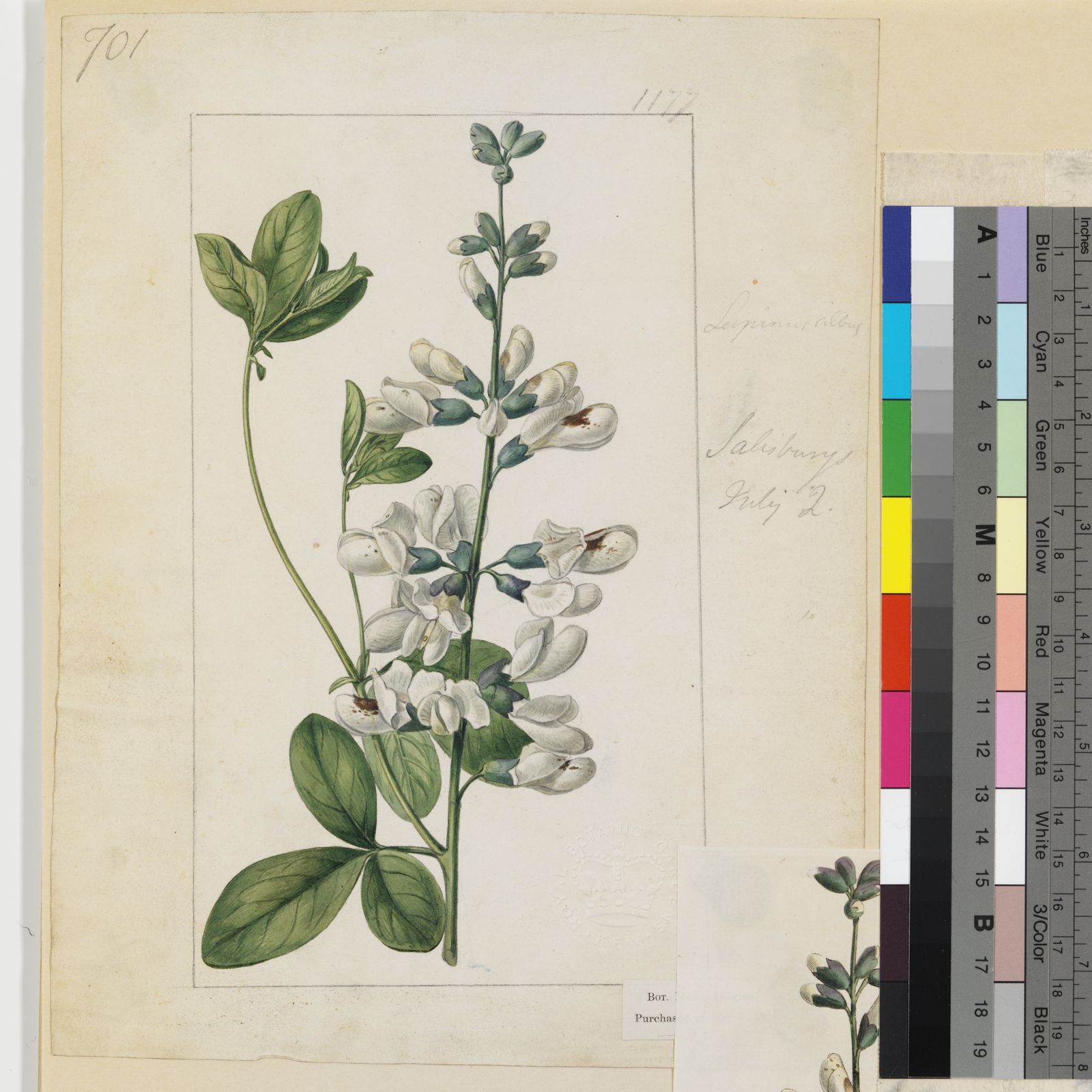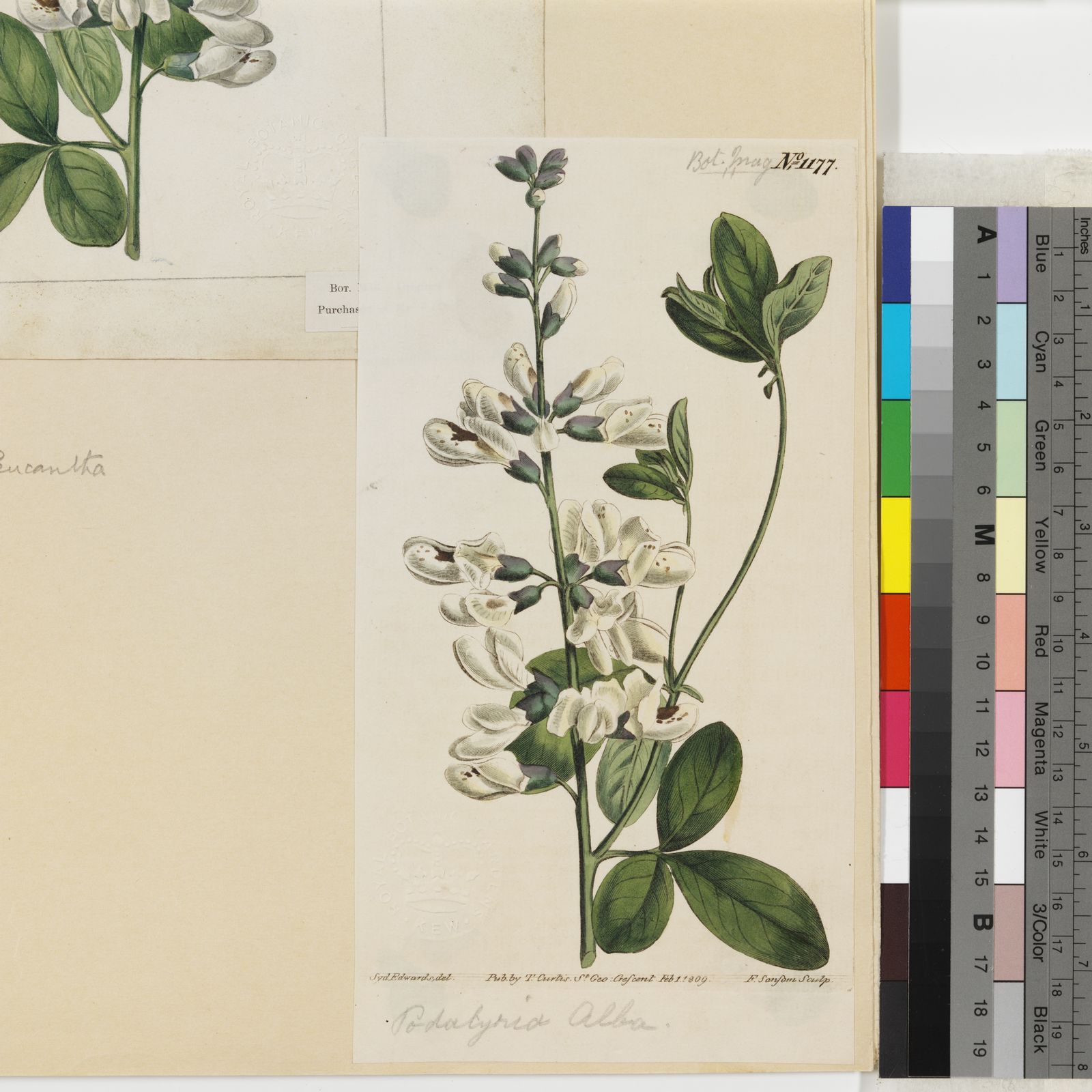White Wild Indigo
baptisia alba
Also known as: ["White False Indigo","White Wild Indigo"]
Overview
A perennial herbaceous plant native to North America, known for its white pea-like flowers and hardy nature.
Benefits & Perks
["long-flowering","disease resistant","deer resistant","wildlife attractant (bees, butterflies, birds)","drought tolerant"]
Botanical Classification
| Phylum: | Magnoliophyta |
| Class: | Magnoliopsida |
| Order: | Fabales |
| Family: | Fabaceae |
| Genus: | Baptisia |
| Botanical Name: | Baptisia alba |
Plant Characteristics
Basic Information
- Category: Flowers
- Suitable Location: garden bed in open areas with good air circulation
- Suitable For:
- Is Weed: No
- Allergenicity: low
Environmental Needs
- Climate: {"temperatureRange":"–30–40°C"}
- Hardiness: {"zones":"3–9"}
- Misting: rarely required
- Drainage: Well-draining to moderately draining.
- Soil Type: Rich, loamy soil with good drainage; tolerates poor soils once established.
Maintenance Level
- Maintenance Level: low
- Toughness Level: high
- Pruning Frequency: Annually in late winter or early spring.
- Pruning Intensity: Light to moderate; remove no more than one-third of the plant at a time.
Care Details
Ideal Sunlight Coverage:
Full sun (6–8 hours/day); tolerates partial shade but blooms less.
Sunlight Tolerance Tips:
Acclimate gradually if moving from shade to sun; protect from intense midday sun in hot climates; ensure good air circulation to prevent mildew.
Care Requirements
Care Difficulty
easymoderate
Sunlight
full sun
Rotate plant for even light; use shade cloth in extreme heat; avoid direct sun on leaves.
Watering
every 2–3 weeks during active growth, less frequently in dormant periods
Water at the base to avoid foliage; ensure soil dries slightly between waterings; avoid overwatering to prevent root rot.
Soil
well-drained, loamy soil with moderate fertility
pH: Slightly acidic to neutral (pH 6.0–7.0).
Ensure good drainage; amend with organic matter; avoid waterlogged conditions.
Temperature
Hardy in USDA zones 3–9; tolerates cold winters and hot summers; prefers 60–80°F (15–27°C) for optimal growth.
Protect from frost; water less in winter; ensure good air flow in heat.
Fertilizing
rarely required, annually in early spring if soil is poor
Fertilize sparingly; apply before new growth emerges; water after fertilizing to distribute nutrients.
Propagation
Methods
Seed or root division; seeds may require stratification for germination.
Step-by-Step Propagation Guide
- Collect seeds in fall.
- Stratify for 60–90 days.
- Sow in spring.
- Or divide roots in early spring.
Best Time: Early spring for root division; fall or winter for seed stratification.
Environment
Warm (70°F/21°C), humid environment for seeds; partial shade for root divisions.
Medium
Well-draining soil mix with sand or perlite; for seeds, use a sterile seed-starting mix.
Hormone
Not typically needed for root division; optional for cuttings.
Timeline
Seeds: 1–3 months for germination; root division: immediate establishment.
Tools Needed
Pruners, trowel, pots, sterile soil mix, plastic wrap (for humidity).
Quick Tips
Stratify seeds for better germination; divide roots when plant is dormant; keep seedlings moist but not waterlogged.
Pruning & Repotting
Pruning Guide
Method
Cut stems back to the base or just above a healthy bud; thin out crowded areas to improve air circulation.
Pruning Plan
Minimal pruning needed; remove dead or damaged stems in late winter/early spring to encourage new growth.
Tools
Pruning shears, gloves, disinfectant for tools.
Checklist
Disinfect tools; prune dead/damaged stems; shape lightly; clean up debris.
Repotting Guide
Best Season
Early spring before new growth begins.
Pot Size
Increase pot size by 2–3 inches in diameter if repotting is necessary.
Method
Use a well-draining soil mix; gently tease out roots if pot-bound; ensure good drainage holes.
Suggestions
Not typically needed; Baptisia alba is a perennial and grows best in the ground; container-grown plants may need repotting every 3–4 years.
Checklist
Choose appropriate pot; prepare new soil; gently remove plant; inspect roots; place in new pot; water thoroughly.
Advanced Care Tips
Watering Mastery
Watering Checklist
Check soil moisture; water deeply; allow drainage; adjust seasonally.
How to Apply Water Properly
Water thoroughly until it drains from the bottom, ensuring the root zone is moistened; water early in the morning to minimize evaporation and fungal issues.
Watering Schedule Tips
Water deeply once a week during the growing season; reduce frequency in winter to monthly or as needed; established plants are drought-tolerant.
Soil Improvement
Add compost or well-rotted manure for fertility; mix in sand or perlite for drainage; avoid heavy clay soils.
Temperature Stress Management
Signs of Temperature Issues
Chlorosis or leaf scorch in excessive heat; stunted growth or dieback in prolonged cold.
Cold Stress
Leaves may wilt or turn yellow; growth slows or halts; roots can freeze in poorly drained soil.
Solution: Mulch heavily in fall; plant in well-drained soil; protect from harsh winds; avoid watering before freezes.
Hot Stress
Wilting, leaf drop, or flower bud abortion; soil dries out quickly; increased susceptibility to pests.
Solution: Water deeply in early morning; provide afternoon shade; use mulch to retain moisture; increase air circulation.
Fertilizing Guide
Fertilizing Checklist
Choose balanced fertilizer; apply in spring; avoid over-fertilizing; water after application.
Fertilizing Method
Use a balanced, slow-release fertilizer in early spring; avoid high-nitrogen formulas; skip fertilizing in late summer to avoid tender growth.
Common Problems & Solutions
Toxicity Warning
Cats
Slightly ToxicCats may experience mild gastrointestinal and neurological effects upon ingestion of Baptisia alba seeds or roots due to the presence of quinolizidine alkaloids. Symptoms are generally manageable but warrant monitoring.
⚠️ Symptoms:
🌿 Toxic Parts:
⚡ Toxic If:
if eaten
Dogs
Slightly ToxicThe quinolizidine alkaloids present in Baptisia alba can lead to mild gastrointestinal upset and neurological symptoms in dogs if consumed. The effects are typically not life-threatening but may require veterinary attention.
⚠️ Symptoms:
🌿 Toxic Parts:
⚡ Toxic If:
if eaten
Humans
Slightly ToxicBaptisia alba contains quinolizidine alkaloids, which can cause mild gastrointestinal distress and neurological effects if ingested in significant quantities. The physiological impact is generally limited to temporary discomfort.
⚠️ Symptoms:
🌿 Toxic Parts:
⚡ Toxic If:
if eaten
Frequently Asked Questions
Q: Is Baptisia alba deer resistant?
A: Yes, it is generally deer resistant.
Q: Does Baptisia alba attract wildlife?
A: Yes, it attracts bees, butterflies, and birds.
Q: How drought tolerant is Baptisia alba?
A: It is highly drought tolerant once established.
Quick Reference
| Family: | Fabaceae |
| Care: | easy |
| Light: | full sun |
| Water: | every 2–3 weeks during activ |
Get Expert Care Tips
Download the Plantious app for personalized care reminders and plant identification!
Google Play App Store








